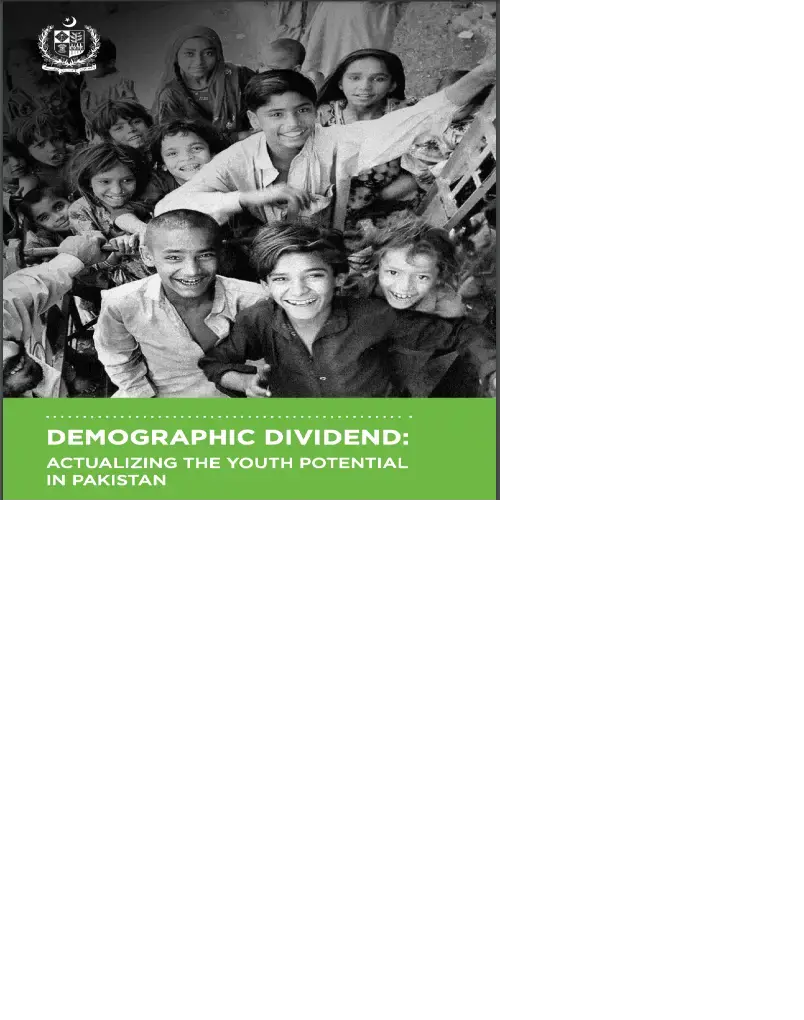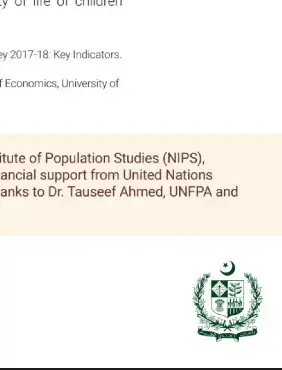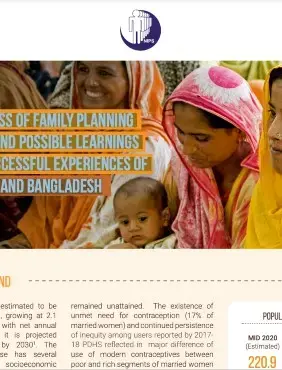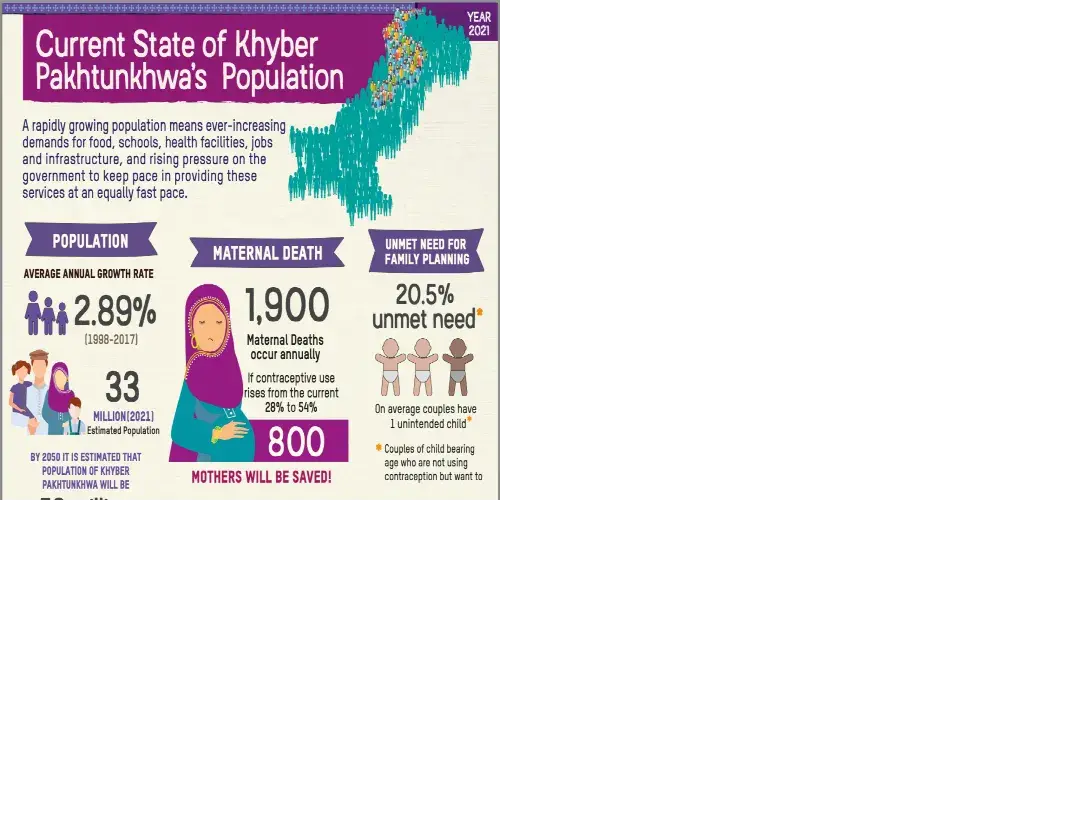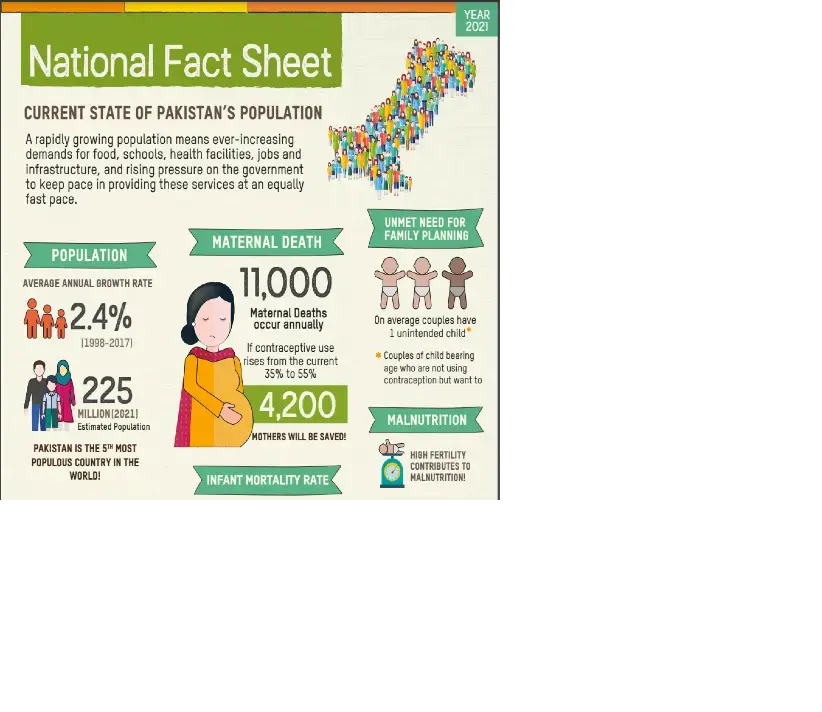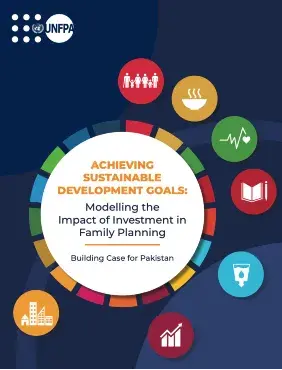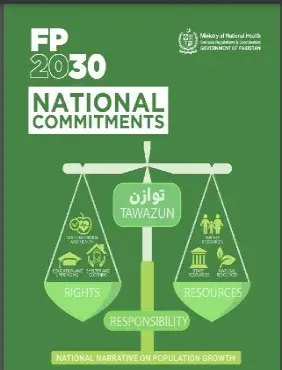Publications
Publications
Resource
DEMOGRAPHIC DIVIDEND: ACTUALIZING THE YOUTH POTENTIAL IN PAKISTAN
Fertility transition is taking place in Pakistan, albeit slowly, and there is an opportunity to reap the benefits of a “demographic dividend”: the economic opportunity provided by ...
Read more
Publication
Family Planning and Fertility Transition in Turkey, Iran & Bangladesh: Process and Challenges
This policy brief was prepared by National Institute of Population Studies (NIPS), Government of Pakistan, with technical and financial support from United Nations Population Fund ...
Read more
Publication
BUDGET DEFICIT FOR INVESTMENTS IN FAMILY PLANNING IN PAKISTAN
The consolidated national costed Action Plans with the amount of Rs. 100.9 billion was presented at the CEWG for endorsement by provincial government representatives and finally go...
Read more
Publication
Policy Brief: Slow progress of Family Planning in Pakistan and possible Learnings from the successful experiences of Iran, Turkey and Bangladesh
As one of the few pioneer countries, Pakistan visualized this situation in the 60s and took a policy decision to address population issue by introducing voluntary family planning s...
Read more
Fact Sheet
Current State of Khyber Pakhtunkhwa’s Population
A rapidly growing population means ever-increasing demands for food, schools, health facilities, jobs and infrastructure, and rising pressure on the government to keep pace in prov...
Read more
Fact Sheet
Current State of Pakistan’s Population 2021
A rapidly growing population means ever-increasing demands for food, schools, health facilities, jobs and infrastructure, and rising pressure on the government to keep pace in prov...
Read more
Fact Sheet
Current State of Punjab’s Population
A rapidly growing population means ever-increasing demands for food, schools, health facilities, jobs and infrastructure, and rising pressure on the government to keep pace in prov...
Read more
Publication
ACHIEVING SUSTAINABLE DEVELOPMENT GOALS: Modelling the Impact of Investment in Family Planning – Building Case for Pakistan
The model for linking family planning with SDGs indicators came from the success and utility of Millennium Development Goals (MDGs) analyses developed by the USAID-funded Health Po...
Read more
Publication
FP 2030 National Commitments
In 2012, under FP2020 Summit on Family Planning in London, Pakistan was among the 67 countries committed to enhance CPR to lower fertility and augment the rights of women. Over the...
Read more

